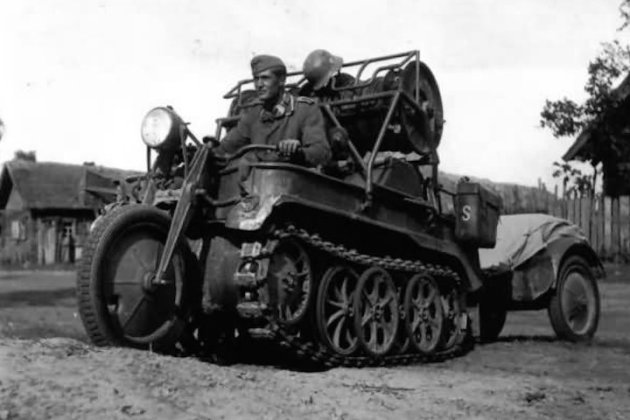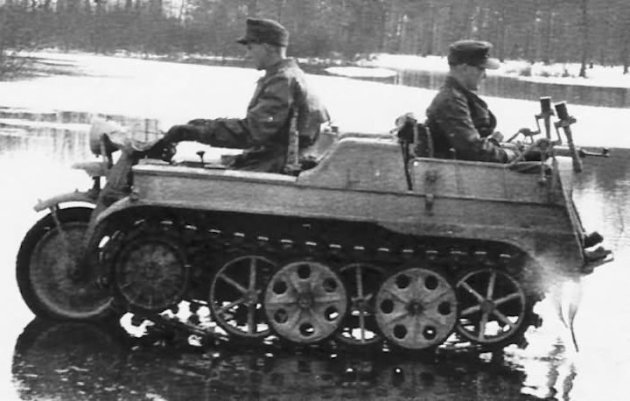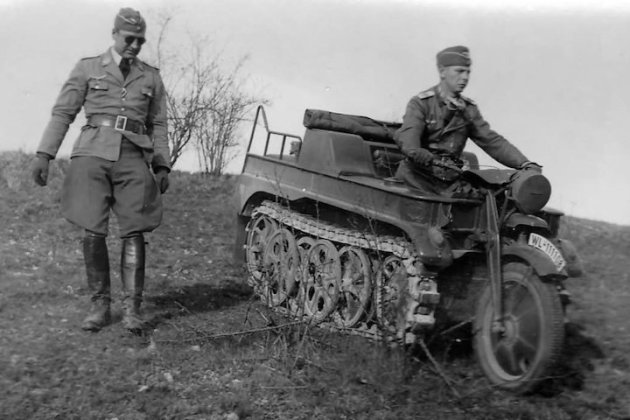
The HK 101 is one of the most
distinctive vehicles ever to see military action. Designed and patented
in 1939 for use by forestry workers, it was adapted for military
purposes when the Germans invaded the Soviet Union in 1941. Powered by
an Opel four-cylinder 36 hp engine, it had a top speed of 44 mph. The
operator steered the vehicle by turning the handlebars; for sharp turns
the track brakes would kick in.
The
Wehrmacht used the HK 101 as a general-purpose utility vehicle,
employing it to lay wires, transport soldiers, and total aircraft. The
vehicle came with a separate cargo trailer, enabling it to haul fairly
sizable loads. In muddy terrain it was common to remove the front wheel
altogether and rely entirely on the tracks for transport.
German factories turned out
8,345 units during the course of the conflict. In 1944, the Allies
bombed the factory where it was built, which brought an end to war-time
production.
Germany’s defeat
led to its governance by American officials, who forbade German industry
from building military vehicles. As the HK 101 had originally been
developed for agricultural purposes, it gained an exemption from this
rule. As a result, renewed production went on until sometime in 1948 or
1949, during which time between 500 and 600 were manufactured.
The sheer volume of units built during the war and afterward make the HK
101 a common site among hobbyists and history buffs in Europe. Many
have been restored to their full wartime glory (minus munitions), and
the modern German government allows owners to drive them on public
streets. Some of these vehicles have even been modified by farmers for
use as tractors. The HK 101’s unique design and unconventional profile
make it one of the more interesting examples from military history.


No comments:
Post a Comment